Things To Do In Wisconsin When You’re Frozen (But Not Dead)
Polar Vortex. Snowpocalypse. Armageddon. Hell. Whatever you want to call it, I think everyone was aware of the once-in-a-generation cold blast that recently hit the Midwest.
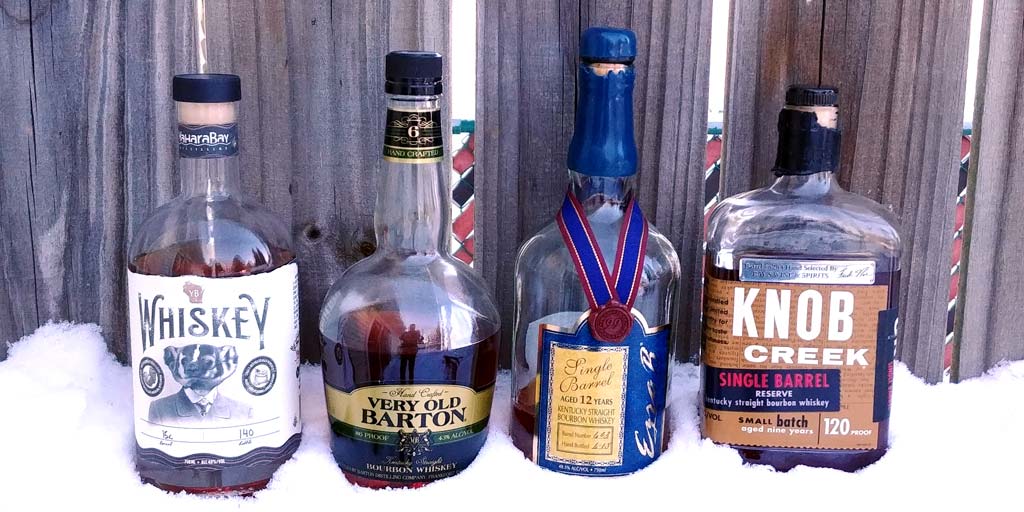
Polar Vortex. Snowpocalypse. Armageddon. Hell. Whatever you want to call it, I think everyone was aware of the once-in-a-generation cold blast that recently hit the Midwest. I live in Wisconsin, we took most of the brunt of the cold, with temperatures plunging into the negative 20’s and wind chills in the -60s.
This meant I was stuck in my house for three days. But, I still had to venture outside. I have a housebroken dog that I need to remain housebroken, and as such, that required letting in a cold blast every time Sammy decided it was “time.” I wanted to make the best of a bad situation, and thought it would be fun to take advantage of some truly brutal weather to conduct a fun whiskey experiment: What happens to whiskey in arctic conditions? Yeah, I was channeling Harlan Wheatley.
Before I continue, I’ll start off admitting that I am not a mathematician nor do I play one on television. My math skills peak at converting ABV to proof and vice-versa. I’m confident there is an equation I could look up on a search engine to find my answer. Yeah, that sounds like a heap of fun. Plus, I’m interested in real-world results.
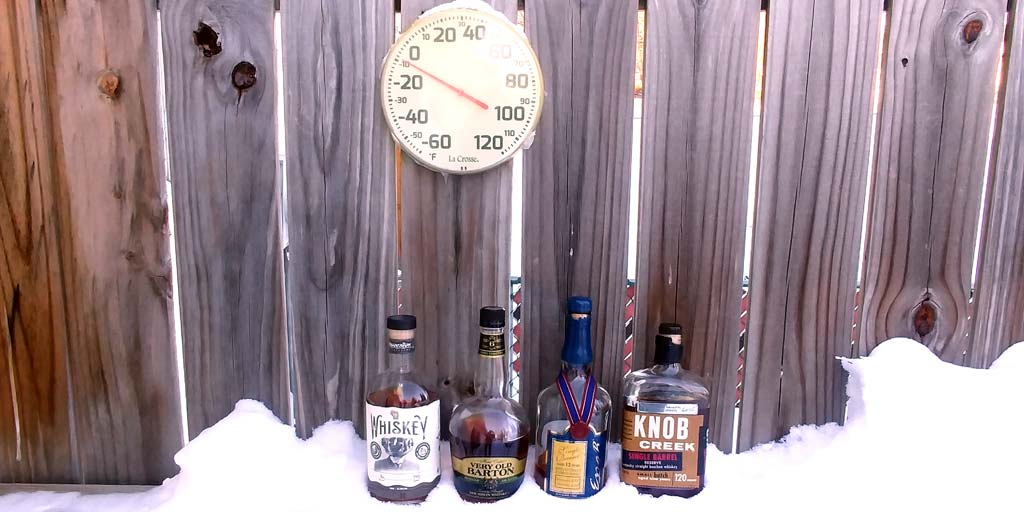
I decided it would be even more interesting to see what happened to whiskeys at various proofs. I grabbed a bottle each of Yahara Bay YB Whiskey (80°), Very Old Barton Bourbon (86°), Ezra B Single Barrel (99°), and Knob Creek Single Barrel (120°). I had some empty two-ounce bottles from a Compass Box sample kit and poured one ounce of each into the bottles. I considered an ounce of whiskey would be large enough to see what happens with the cold and the two-ounce bottle would give plenty of room should the whiskey expand in the bottle.
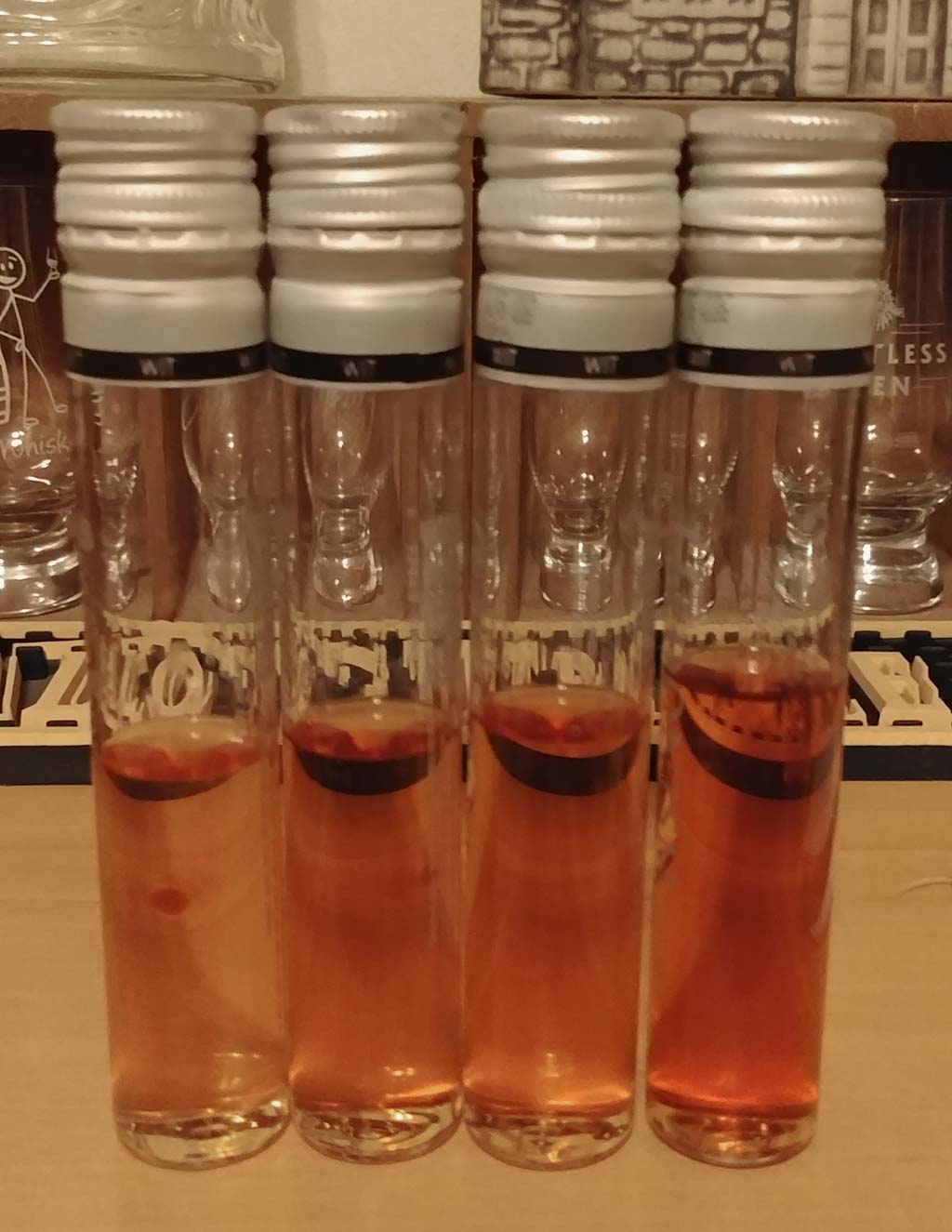
My laboratory was my back deck. I started my experiment on Monday, January 28th at 5:30pm. My thermometer indicated it was 10°F. I cleared off some snow from the railing and laid the four bottles on their side in the corner. This would expose the bottles to the elements and prevent any insulating qualities from the snow. It would also prevent the harsh winds from possibly knocking the bottles over and destroying the experiment.
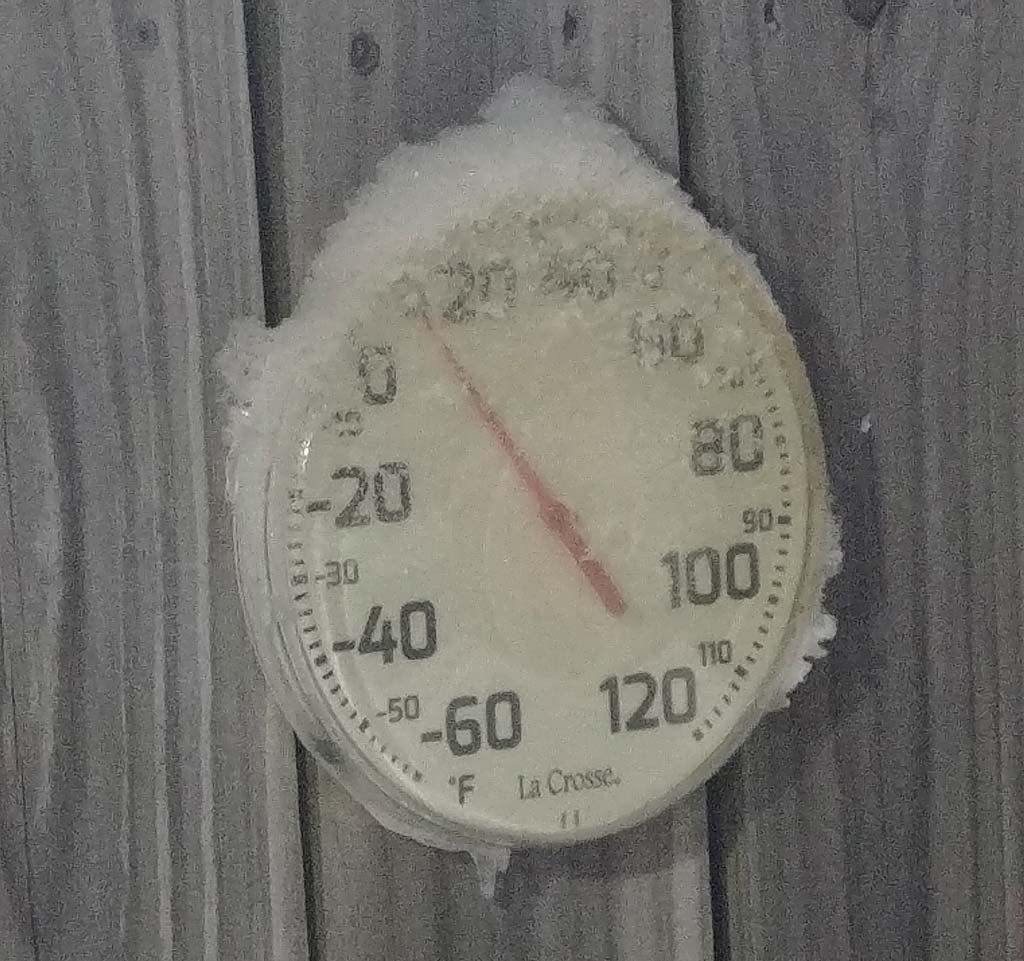
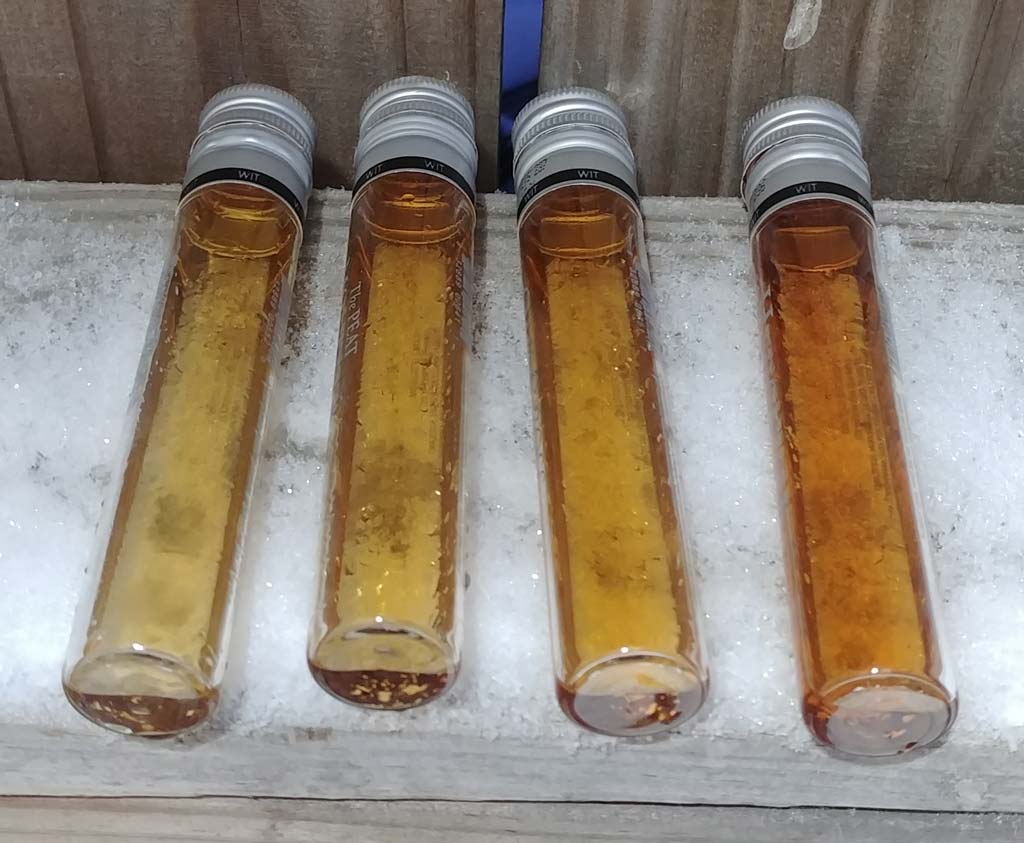
My motivation to check on my experiment involved Sammy signaling that it was time to go potty. That started at 7:00 am on Tuesday. The thermometer registered -4°F and the wind wasn’t really a factor at that point. However, I already observed something interesting and completely unexpected. The whiskeys remained warm enough to affect the residual snow underneath the bottles. I discovered the higher the proof, the more it melted the snow.
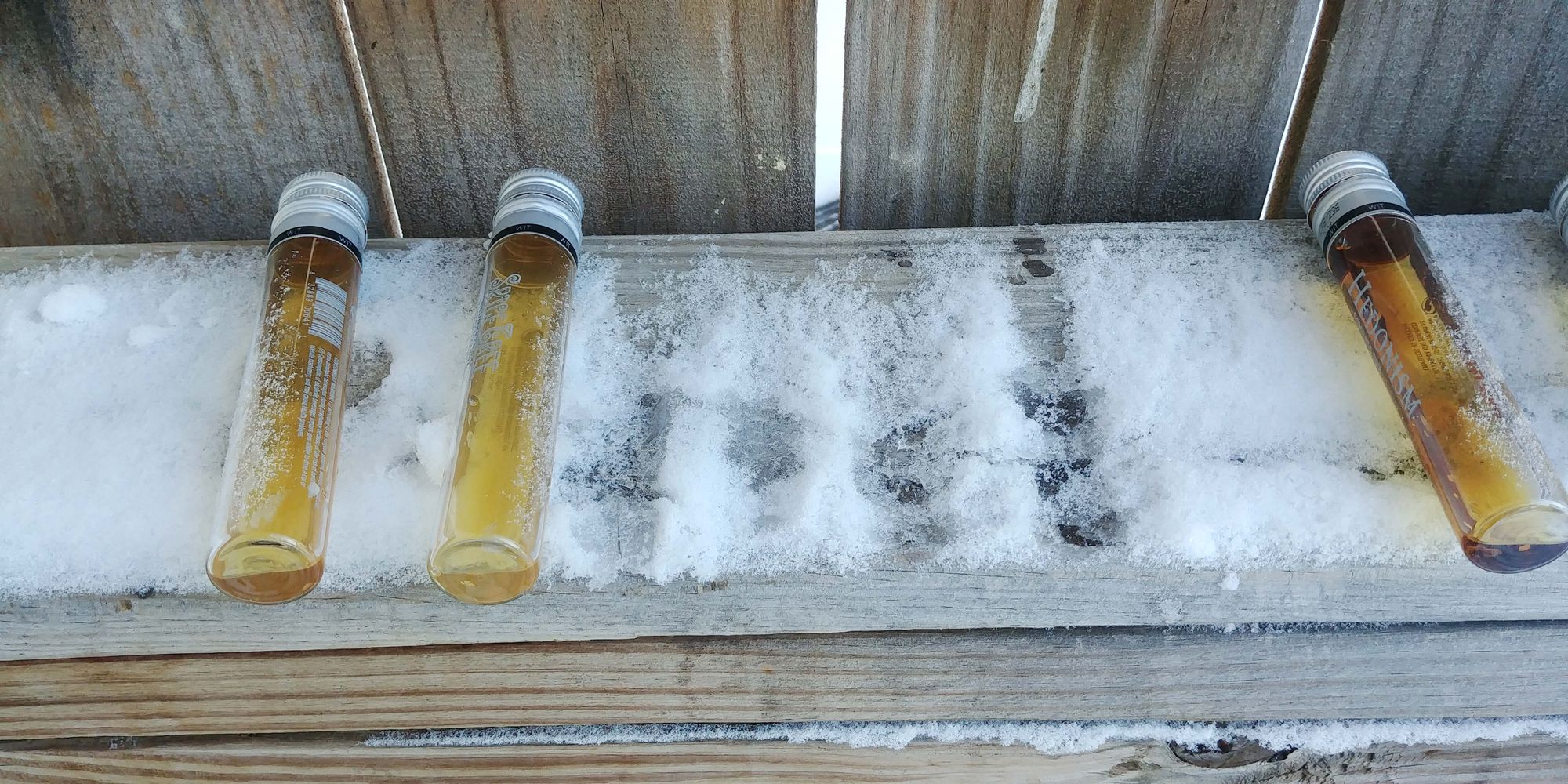
When I next checked at 10:45 am, I discovered a problem: the sun was hitting the whiskey almost directly. The thermometer above it, which should have read -1°F, was instead showing almost 25°F. Even with a wind chill of -24°F, this was going to spoil the experiment. I cleared another area on the other side of the deck where the sun wouldn’t have as much of an effect.
Once I moved the samples, I pretty much left them alone. At 5:00 pm, the temperature was -6°F with wind chill of -35°F. There was no change at that point. But, at 9:00 pm, the real temperature dropped to -12°F with wind chills at -37°F. Three of the samples looked the same, but the 80° Yahara Bay sample started getting thick.
Fast forward to 6:40 am on Wednesday, the real temperature was -24°F with wind chills of -54°F. At this point, both the 80° Yahara Bay and the 86° Very Old Barton were slushy. The other two showed nothing, not even a thickening.
Then, at 8:45 am, magic happened. The real temperature was -25°F and the wind chill actually rose to -52°F. That one degree completely froze the 80° and 86° whiskeys. The 99° and 120° both remained normal as if they were in a room temperature home.
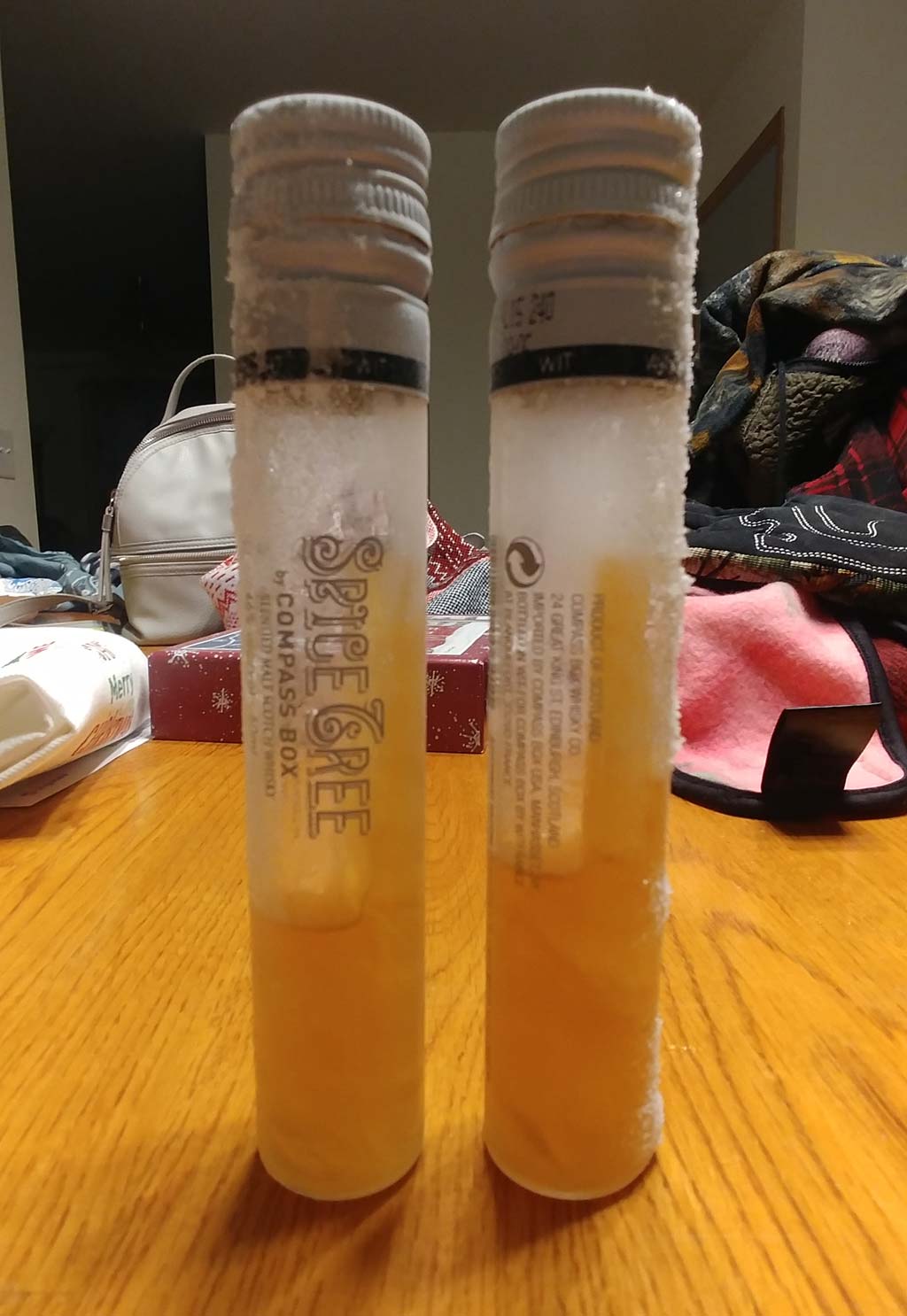
At 11:30 am, the temperature rose to -20°F with wind chills of -43°F. The Very Old Barton completely liquified, but the 80° Yahara Bay got slushy again.
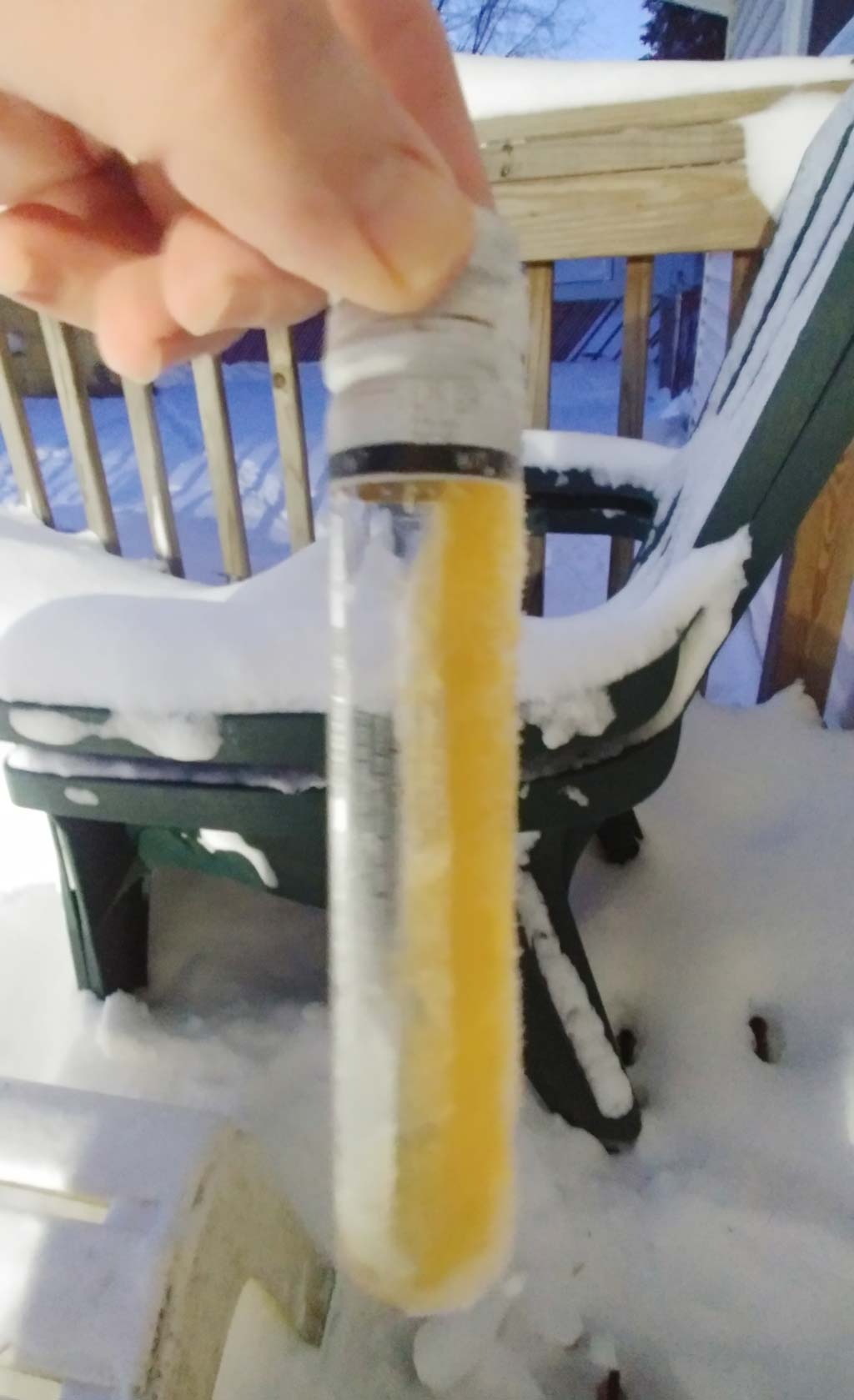
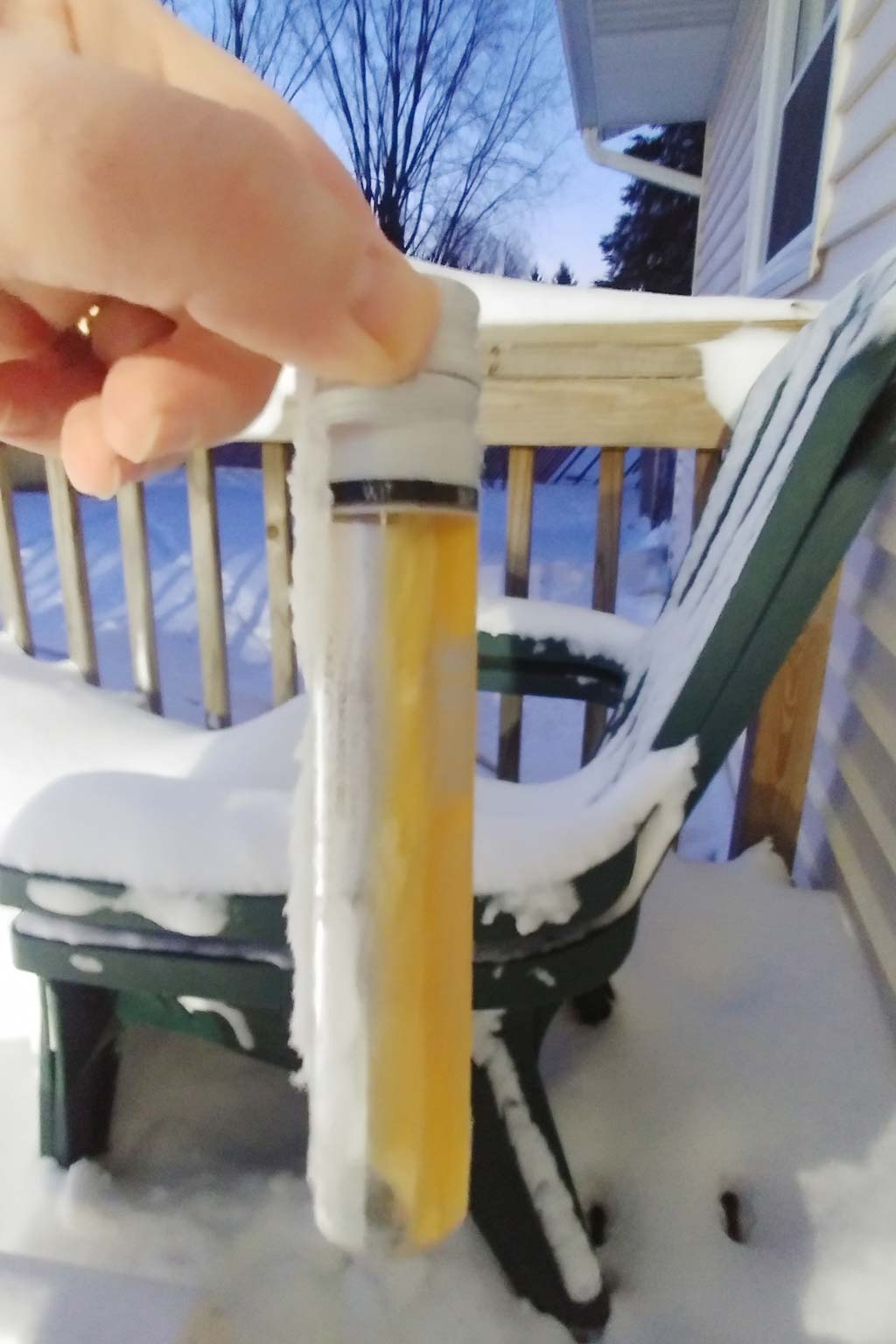
At 3:00 pm, the temperature rose to -12°F with wind chills of -33°F. The Yahara Bay was still slushy.
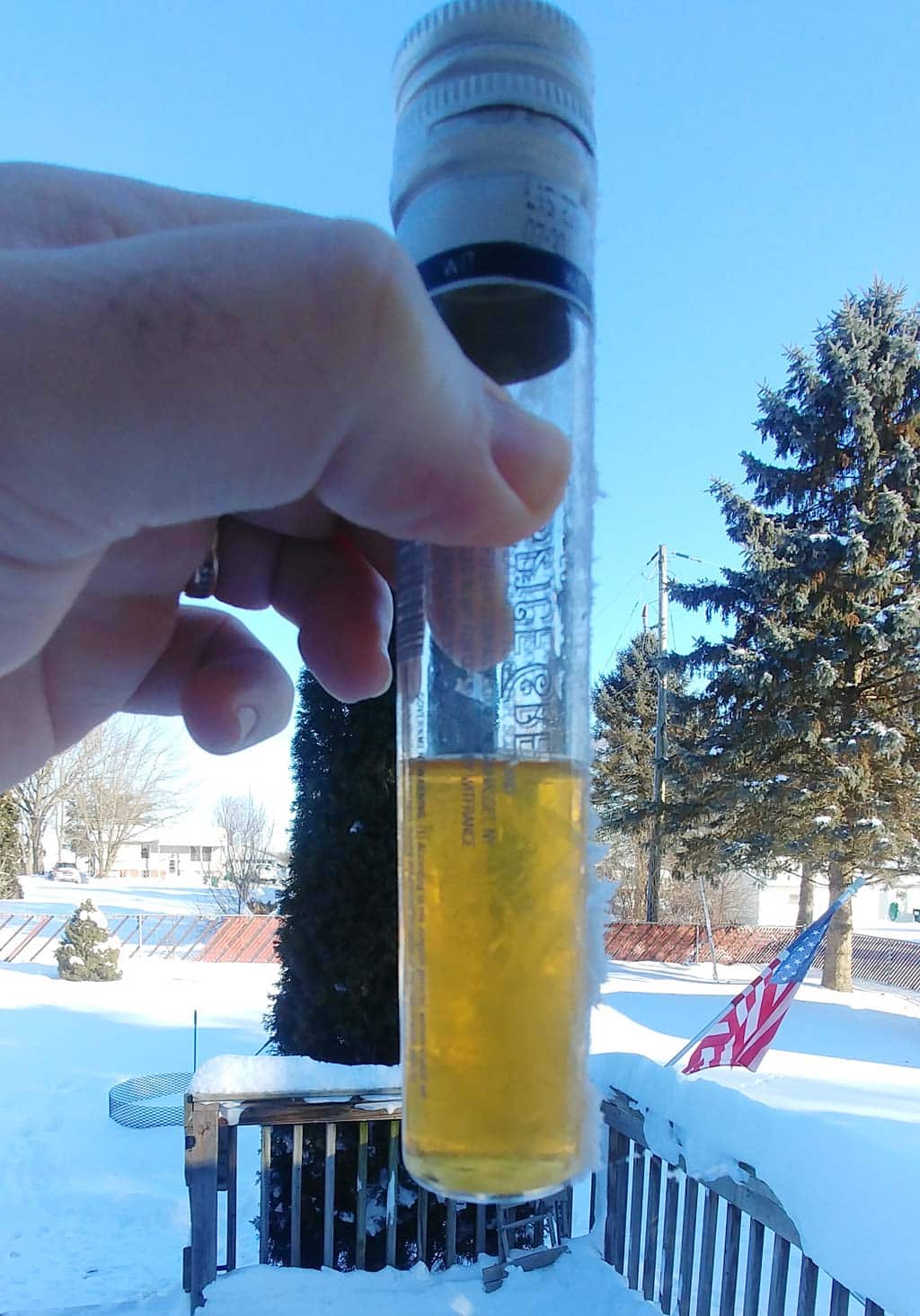
When I went outside Thursday morning at 7:00 am, the temperature was -28°F and the wind chill was -35°F. Both the Yahara Bay and Very Old Barton were frozen solid. And, for the first time, the 99° Ezra B was getting slushy. The Knob Creek 120° showed no change.
At 9:15am, the temperature started to rise to -25°F and the Polar Vortex was moving out. The winds died down, and the Ezra B was completely liquified, and both the Yahara Bay and Very Old Barton got slushy again. At this point, I ended the outdoor part of the experiment.
I then let the whiskeys all come back to room temperature and let them sit for a day. I was curious if anything changed while the whiskeys were frozen or even thickened compared to their original counterparts.
First up was the 80° Yahara Bay. Strangely enough, the color changed, which didn’t make much sense to me. It was slightly more pale than the original. And, while the nose had no discernable change, the mouthfeel was much thinner after it froze. I went back and forth a few times to make sure the change was real. I also found the palate was more muted. Oak remained but all the other flavors were lost. The finish was also shorter than the original. Again, I went back and forth to make sure my findings were accurate.
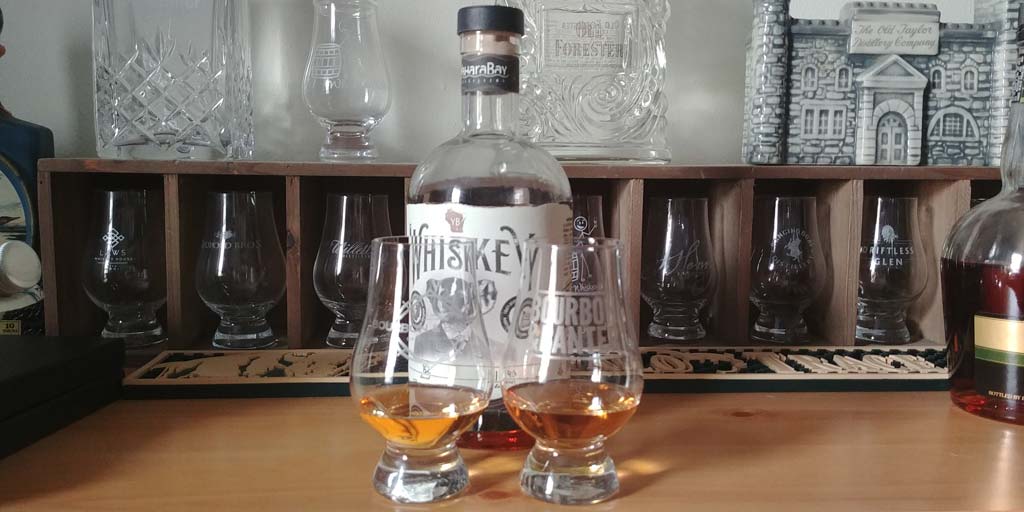
The second was the 86° Very Old Barton. Unlike the Yahara Bay, I saw no difference in color or the nose. However, that same thinner mouthfeel was present compared to the original. And, again, I found the palate was muted similarly to the Yahara Bay, but to a lesser extent. The finish was also shorter.
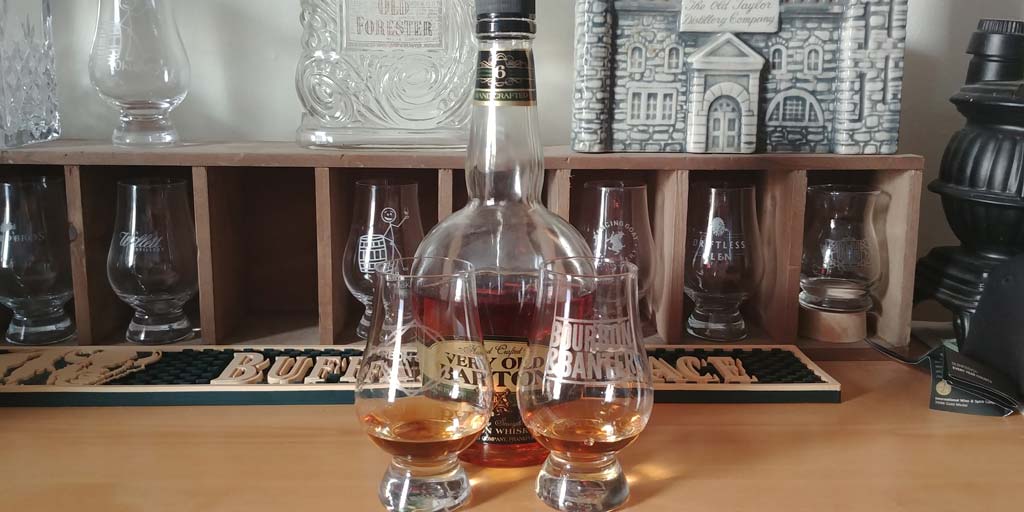
The third was the Ezra B. I found no changes between the two, despite it turning to a slight slush.
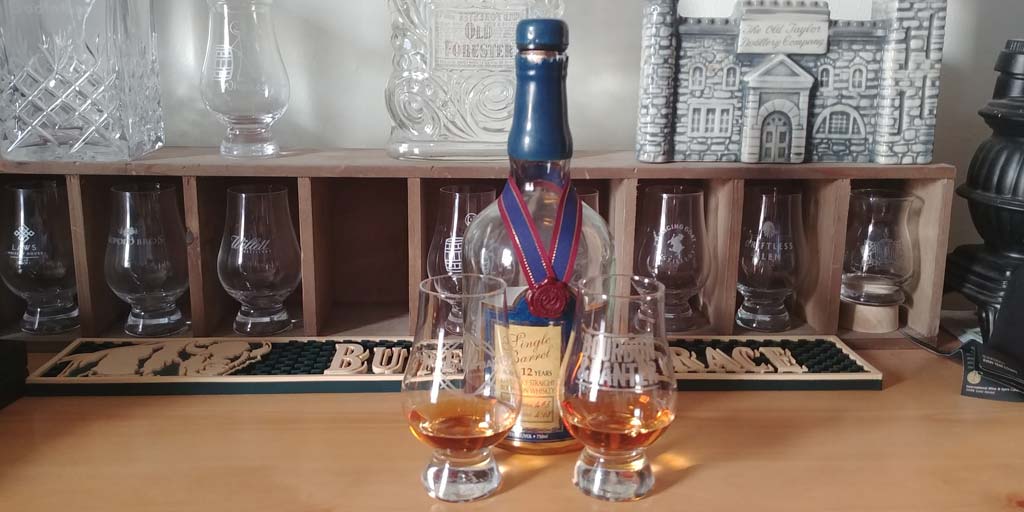
The fourth, the Knob Creek, experienced no changes whatsoever. I expected that considering the Ezra B had none as well.
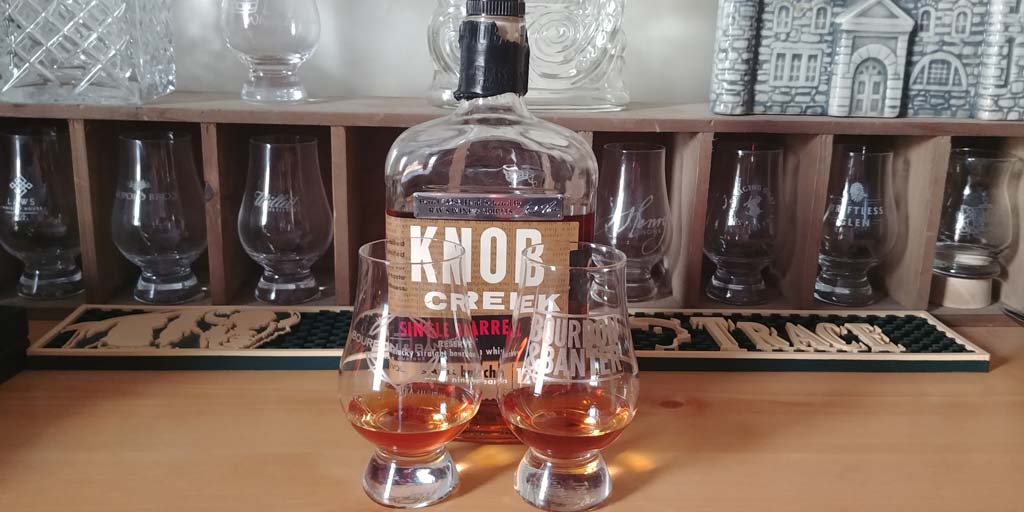
What did I learn? I don’t believe the wind chilll made any real difference. But, the real temperature had an obvious effect. It was also apparent there isn’t a lot of difference between 80° and 86° as far as a reaction to cold is concerned. I was shocked that the whiskeys could generate enough heat by themselves to melt snow at different rates.
Obviously, it is the water content that freezes. As such, the higher proofed whiskeys had less water to deal with the temperatures.
I was blown away by the changes in the 80° and 86° whiskeys. The non-scientist in me can’t understand why the cold would affect color and mouthfeel. I can figure out the change in palate and finish is due to being subjected to extreme temperatures. And, it seems that while gelling up won’t affect a whiskey’s flavor and finish, freezing has a definite affect.
If I go through my life never having to duplicate this experience, I’m good with that. On a more personal level, I’ve discovered there’s no real difference between -5°F and -55°F as it feels on human skin. Both are just damned cold. For Sammy, there was an obvious difference. He’s good with fartzing around in -5°F. He’ll go on yard patrol and hunt down bunnies and squirrels. But, this English Springer Spaniel is unhappy at -25°F and can do his business in just a minute before he’s ready to come inside.

Cheers!
